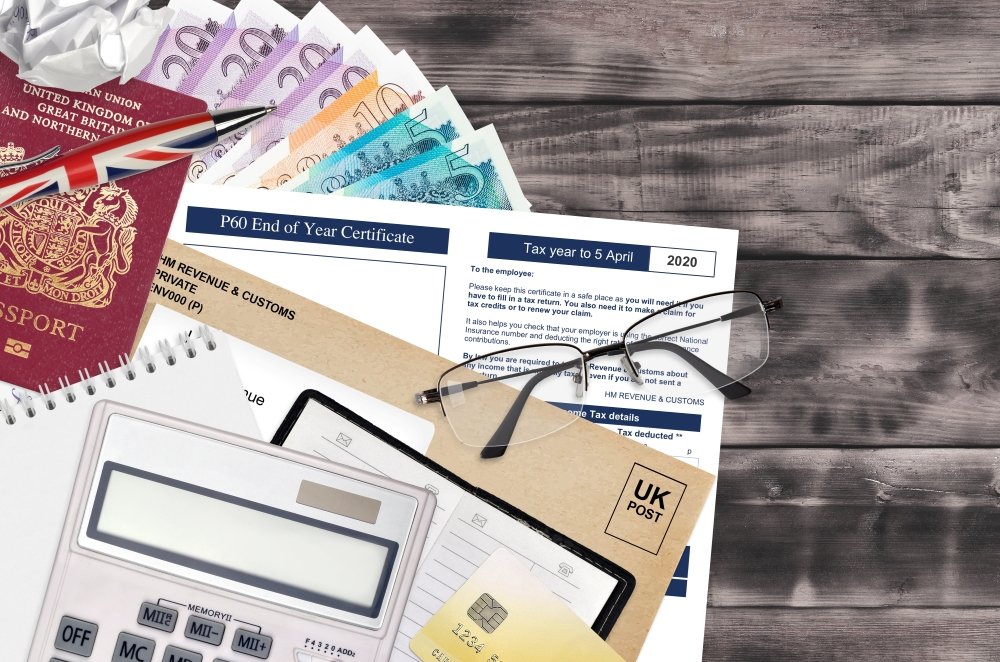Taxation is an important skill to have in order to thrive in human and business finance. Of all the tax rates in the UK, the 40% or higher tax rate is the most important for budgeting. Understanding its nuances, implications, and ways to deal with its effects can greatly improve your ability to save more of your money and become wealthier more efficiently.
Table of Contents
ToggleWhat is a Tax Bracket?
Tax brackets are ranges of income that are taxed at specific rates. They form the foundation of the UK’s progressive tax system, where higher earners pay a greater percentage of their income in taxes. This approach is designed to ensure fairness and equity, with those earning more contributing proportionally more to public services and national infrastructure.
Under this progressive system:
- Income up to a certain threshold is taxed at 0% (Personal Allowance).
- Subsequent income is taxed at incrementally higher rates, with the highest rate applying to the portion of income exceeding the top threshold.
The structure means that individuals in higher tax brackets still benefit from lower rates on their income within the lower brackets. This is a common misconception, as being in the 40% tax bracket does not mean your entire income is taxed at 40%.
The 40% Tax Bracket Explained
The 40% tax bracket, also called the higher-rate tax band, applies to individuals with taxable income between £50,271 and £150,000 during the 2024/2025 tax year. Income in this range is taxed at 40%, while:
- Income below £50,271 is taxed at 0% (up to £12,570) and 20% (basic rate).
- Income above £150,000 falls into the additional rate tax band and is taxed at 45%.
For example:
- If your annual income is £70,000:
- The first £12,570 is tax-free (Personal Allowance).
- The next £37,700 is taxed at 20%.
- The remaining £19,730 is taxed at 40%.
This tiered system ensures a fair application of tax rates but requires careful management to avoid unnecessary financial strain.
Implications of Falling into the 40% Tax Bracket
1. Increased Tax Liability
Being in the higher-rate tax bracket means a significant portion of your income is taxed at 40%. This increase in tax liability reduces your net earnings, which can affect your ability to save, invest, or meet financial goals.
2. Impact on Allowances and Benefits
Higher-rate taxpayers face reduced access to some benefits and allowances:
- Personal Savings Allowance (PSA): Basic-rate taxpayers can earn £1,000 in savings interest tax-free, while higher-rate taxpayers are limited to £500.
- Child Benefit Tax Charge: If your income exceeds £50,000, you may face a High Income Child Benefit Charge, potentially reducing or eliminating child benefit payments.
- Tapered Personal Allowance: For incomes over £100,000, the personal allowance (£12,570) begins to taper off, reducing by £1 for every £2 earned over the threshold. This results in an effective marginal tax rate of 60% for income between £100,000 and £125,140.
3. Complexity in Financial Planning
The 40% tax bracket introduces layers of complexity to personal finances, requiring proactive strategies to manage liabilities and optimise outcomes. Without a sound plan, you risk paying more tax than necessary.
Strategies to Manage Tax Liability in the 40% Bracket
1. Maximise Pension Contributions
Pension contributions are among the most effective ways to reduce taxable income. Contributions are deducted before tax is applied, meaning higher-rate taxpayers benefit from significant tax relief. For instance:
- A £10,000 pension contribution effectively costs a higher-rate taxpayer only £6,000 after tax relief.
- Employer contributions under salary sacrifice schemes can further enhance pension savings while reducing National Insurance contributions.
2. Leverage Charitable Donations
Donating to registered charities under the Gift Aid scheme provides tax relief:
- For every £80 donated, the charity claims an additional £20 from HMRC.
- Higher-rate taxpayers can claim an additional £20 in tax relief, reducing their overall tax burden.
3. Invest in Tax-Efficient Vehicles
Investing in tax-efficient options can shield your earnings from unnecessary taxation:
- Individual Savings Accounts (ISAs): Allow tax-free growth on investments and savings up to the annual limit (£20,000 for 2024/2025).
- Enterprise Investment Scheme (EIS) and Venture Capital Trusts (VCTs) Offer tax relief for investments in small or growing businesses with significant potential for growth.
4. Income Splitting
If you’re married or in a civil partnership, transferring assets or income to a lower-earning spouse can be advantageous. For example:
- Transferring rental property income can help them utilise their lower tax brackets and allowances.
- The Marriage Allowance allows one spouse to transfer £1,260 of their unused Personal Allowance to the other, provided neither is a higher-rate taxpayer.
5. Use Salary Sacrifice Schemes
Salary sacrifice arrangements enable you to exchange part of your salary for non-cash benefits such as:
- Additional pension contributions.
- Childcare vouchers.
- Cycle-to-work schemes.
These arrangements lower your gross salary, reducing the amount of income subject to higher-rate taxation.
6. Optimise Dividends and Investments
For business owners or shareholders:
- Pay yourself a combination of salary and dividends to maximise tax efficiency.
- Use the Dividend Allowance (£1,000 for 2024/2025) to minimise tax on dividend income.
7. Timing and Deferral
Where possible, deferring income to future tax years can help avoid breaching thresholds for higher tax rates or allowance reductions. This strategy is particularly useful for bonuses or capital gains.
The Role of Professional Taxation Services
The complexities of the 40% tax bracket often necessitate professional assistance. Expert taxation services, like those offered by Bloom Financials, provide better advice to ensure compliance and optimise financial outcomes.
Benefits of Professional Tax Guidance
- Personalised Planning: Expert advisors assess your financial situation and create strategies to reduce liabilities.
- Compliance and Risk Management: Ensure adherence to tax laws, avoiding penalties or fines.
- Maximised Savings: Professionals identify overlooked opportunities to save through allowances, deductions, and tax-efficient investments.
Case Study: Managing Tax Liabilities
Scenario:
- Earnings: £85,000 annually.
- Current Tax Position: Subject to higher-rate tax on income above £50,271.
Strategies Implemented:
- Pension Contributions: Increased contributions to reduce taxable income by £10,000, saving £4,000 in taxes.
- Gift Aid Donations: Donated £2,000 to charity, providing £500 in additional tax relief.
- ISA Investments: Maximized annual ISA allowance, sheltering investment growth from tax.
- Income Splitting: Transferred rental property income to a lower-earning spouse, saving £2,000 in taxes.
Outcome: Through these strategies, the individual reduced their tax liability by £6,500 while increasing long-term savings.
Common Misconceptions about the 40% Tax Bracket
1. “My Entire Income is Taxed at 40%”
This is incorrect. Only the portion of income within the higher-rate bracket (£50,271 to £150,000) is taxed at 40%. Income below £50,271 is taxed at lower rates.
2. “There’s No Way to Reduce Taxes in the 40% Bracket”
There are numerous strategies to lower taxable income and minimise liabilities, from pension contributions to utilising allowances effectively.
3. “Hiring a Tax Advisor is Unnecessary”
While some may prefer a DIY approach, professional advice often uncovers opportunities for savings that would otherwise go unnoticed.
Conclusion
Understanding the 40% tax bracket is essential for effective financial planning. While higher taxation is an inevitable consequence of increased earnings, proactive strategies can help mitigate its impact and optimise your financial outcomes. By leveraging tools such as pension contributions, tax-efficient investments, and professional guidance, you can navigate the complexities of the tax system with confidence.
Engaging with experienced financial advisors, like those at Bloom Financials, ensures you have the expertise and support needed to minimise tax liabilities and achieve long-term financial goals. Whether you’re an individual taxpayer or a business owner, taking control of your tax planning today will pave the way for a more secure financial future.





